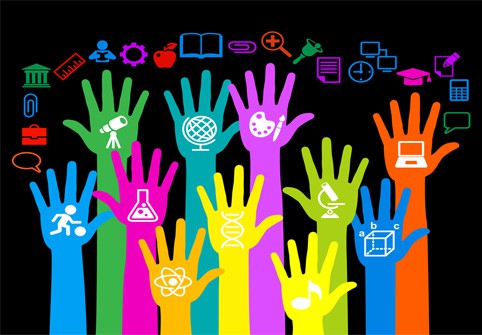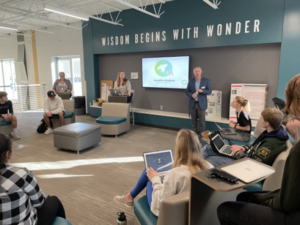Personal Digital Learning is Changing the World

About a decade ago, the launch of Wikipedia was symbolic of an important threshold in human history—anyone with a broadband connection could learn almost anything for free or cheap.
This year inexpensive tablet computers and free resources like Khan Academy are extending the learning revolution. The teachers and students that grew up as digital natives are bringing new tools to school. The promise of personal digital learning is finally rippling through educational institutions of developed economies and creating new opportunities for getting smart in emerging economies. The outcome will be more students in the U.S. will be prepared for college and careers and more young people in developing economies will connect to the idea economy.
Personal digital learning is providing three primary benefits, as outlined in my new book, Getting Smart: How Digital Learning is Changing the World. The first benefit is customized learning. Learning online created the ability to vary rate, time, and location. Customized learning goes a step further and supports unique pathways. The ability to produce a playlist of learning experiences tailored to individual learning levels and interests will boost learning per hour and will prepare students to engage in deeper learning experiences with teachers and peers—some local and some remote.
School of One, a New York City math pilot, is a good early example of the potential of customized learning. Every student receives instruction at the right level and in the best mode every day based on a smart algorithm and the judgment of data-informed teachers.
Borrowing from Halo and Angry Birds, the second benefit of digital learning is improved student motivation. Engaging learning media is encouraging students to work harder and longer. A few sessions a week of ST Math, a visual game-based approach, is narrowing the achievement gap in 1200 schools across the country.
Mobile learning and motivated learners means more learning hours per year—at schools and at home. Based on the success of Rocketship Education, a high performing California school network, a number of Chicago elementary schools introduced learning labs to extend the learning day. Nonprofit CFY helps parents extend learning with leveled playlists on PowerMyLearning.com.
Equalization is the third benefit of digital learning. Most states will be implementing online assessments over the next four years and assisting schools in creating high access environments that will improve Internet access to low income students. Many U.S. schools will leverage the shift online testing by adopting digital content. Many schools will use inexpensive tablets to close the digital divide.
Most schools that leverage personal digital learning will combine old and new methods of learning in creative ways. Learning environments that blends online and onsite elements have widely used with great success in military and corporate training and in higher education for more than a decade. Students at Carpe Diem Collegiate High School in Yuma Arizona split their time between learning online and more traditional workshop setting. Top math scores suggest that the approach works.
In most states, the fiscal crisis is making business as usual impossible. Secretary Duncan called it the “new normal” and suggests that we need to adopt new approaches that leverage great teachers, boost time on task, and stretch tight budgets.
The shift to personal digital learning and adoption of new blended learning models requires big changes in state policy. Digital Learning Now, an advocacy initiative co-chaired by two former governors, Jeb Bush and Bob Wise, issued a Roadmap for Reform this month. The Roadmap will help more schools take advantage of customization, motivation, and equalization.
While US schools will soon produce higher achievement and better preparation, cheap tablets will for the first time connect millions of students in developing economies to high quality secondary education. The shift to personal digital learning could be just boost the world economies needs.
First published on Huffington Post







luis
Personal Digital Learning is definitely the best choice for a lot od people that either love to learn or don't have time to attend traditional classes.
However, with so many great educational material and videos posted by educators, a curation process needs to be implemented to make the process of locating the material easier.
One of this efforts is being done by http://Utubersity.com which presents the best educational videos available on Youtube in an organized, easy to find way to watch and learn.
They are classified and tagged in a way that enables people to find these materials more easily and efficiently and not waste time browsing through pages of irrelevant search results.
The website also enhances the experience using other means such as recommending related videos, wikipedia content and so on.
There's also a spanish version called http://utubersidad.com